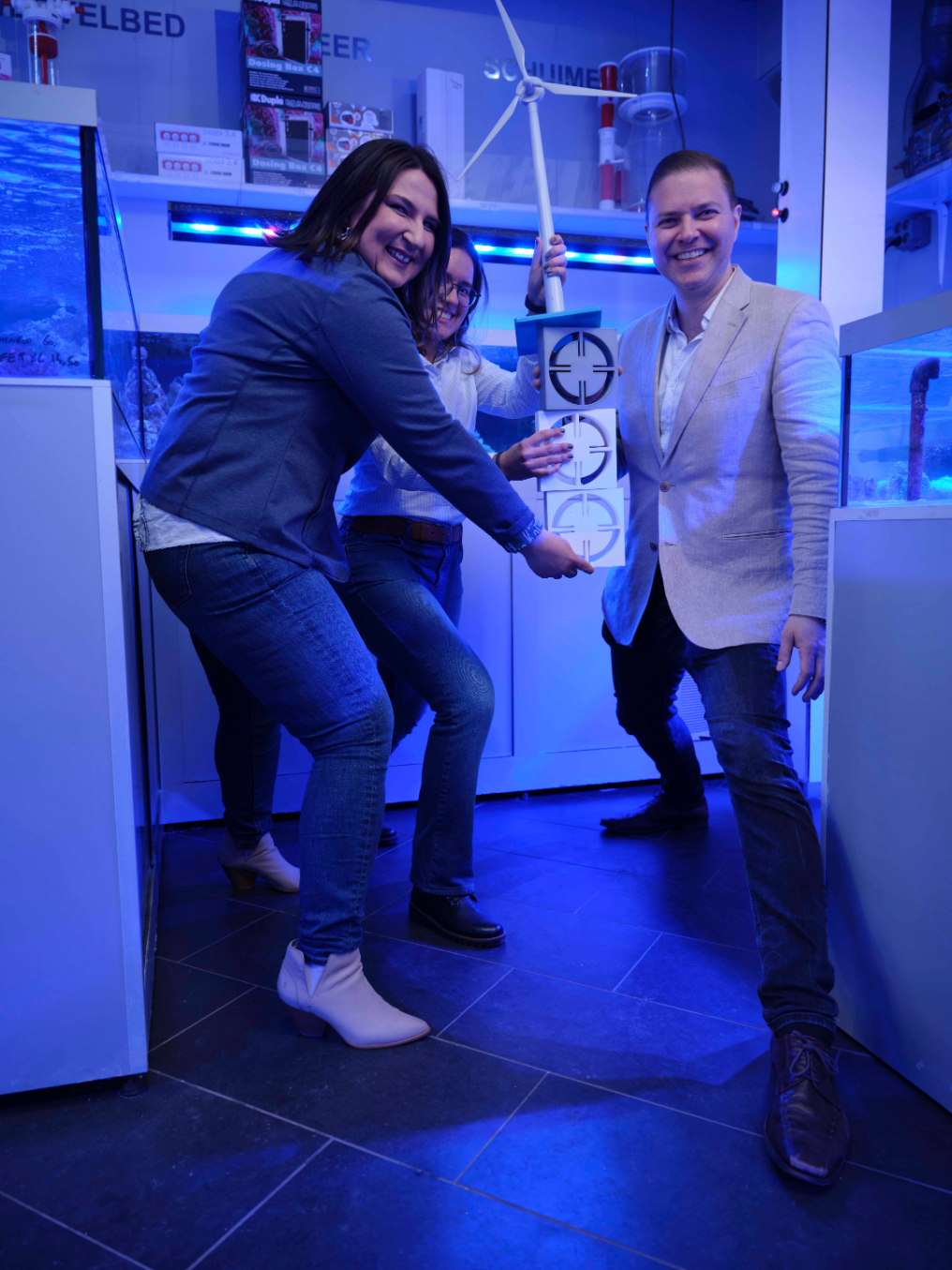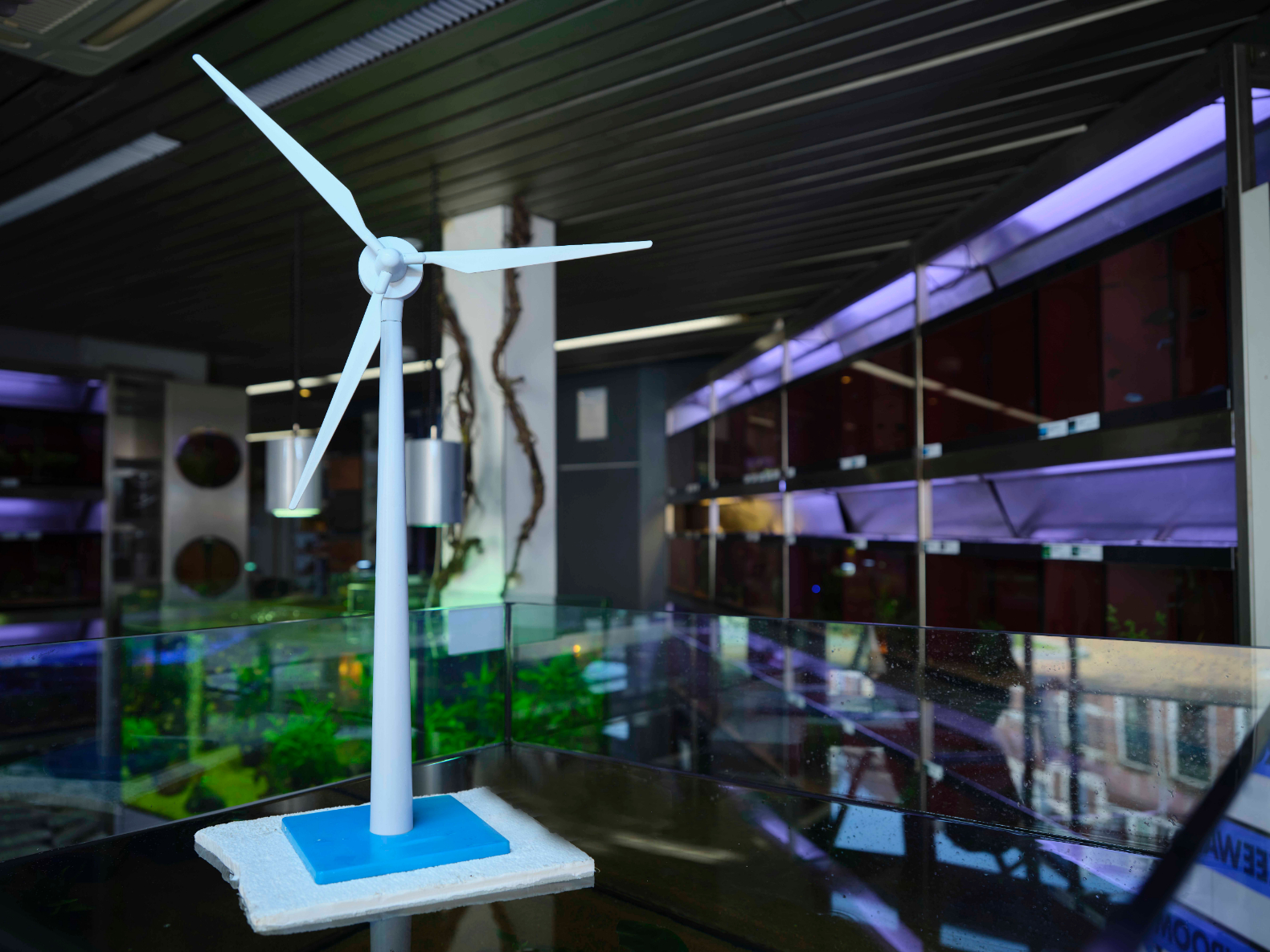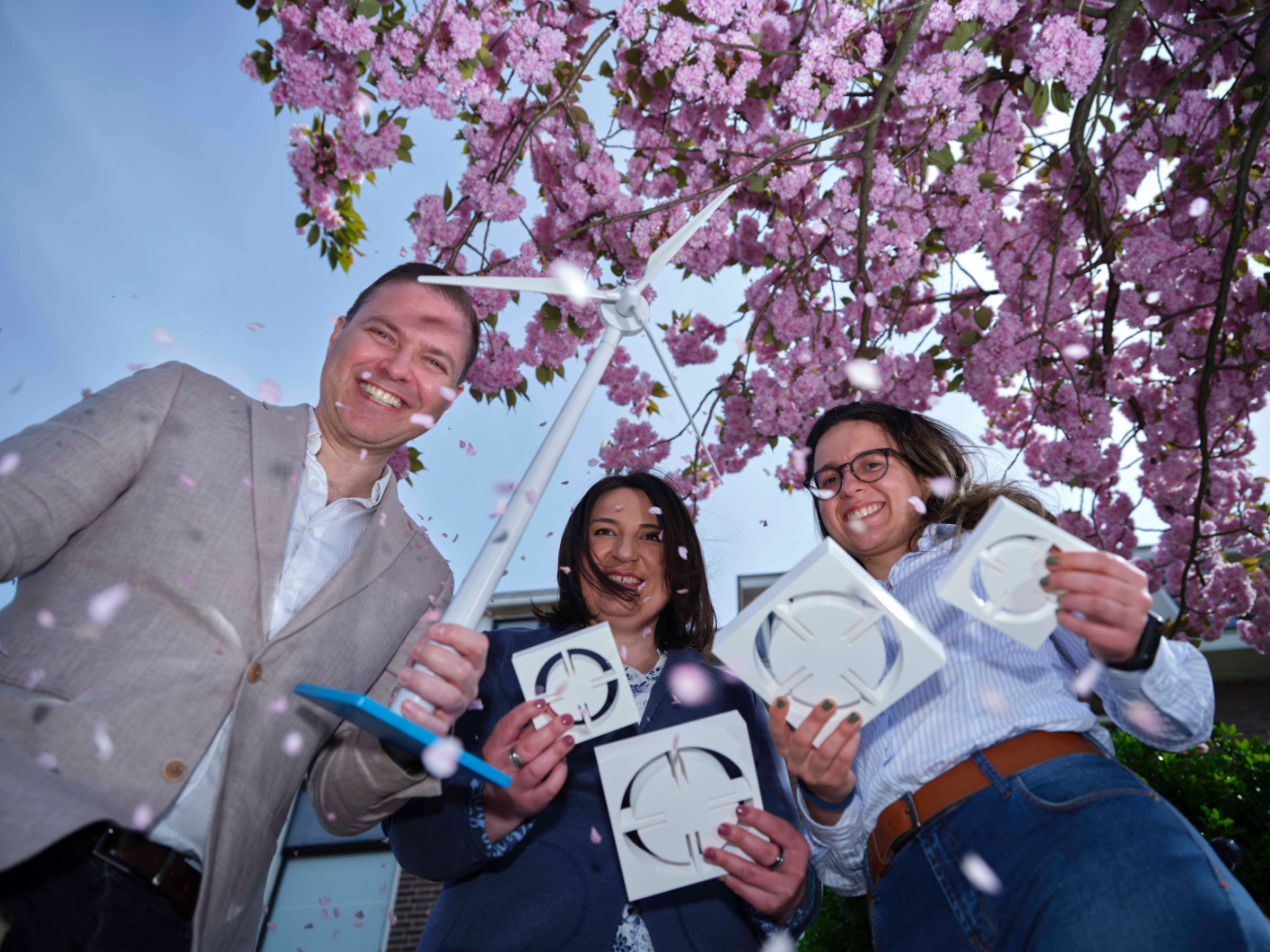Europe’s commitment to a rapid energy transition demands more sources of renewable energy including more and bigger wind turbines in the North Sea. A common way to install a wind turbine is to hammer a monopile foundation into the seabed but this is an extremely noisy process and harmful to marine life. As part of a Cohesion project, researchers from different departments of the Faculty of Mechanical Engineering (ME) have developed a metamaterial interface to filter out the sound energy that is harming marine biodiversity.
“We met at a TU Delft recruiting event,” explains Alejandro M. Aragón of ME’s Department of Precision and Microsystems Engineering (PME), referring to his Cohesion project partner, Jovana Jovanova of the Department of Maritime and Transport Technology (MTT). “And we thought it would be nice to collaborate as we have complementary expertise. Jovana’s research is focused on adaptive structures and systems, particularly from the side of application-driven design experiments, and I am more from the theoretical and modelling side of things so it’s really a nice way to complement one another.”
“When the proposals for the Cohesion projects came along, we thought that was a great opportunity to kick-start our collaboration,” continues Jovanova, whose expertise is in the design of smart structures and systems. “We knew about this issue with the wind turbine monopile noise and as Alejandro had already been working on metamaterials for suppressing noise, and I had experience with vibration control of structures, we thought why don’t we combine forces and come up with a solution that is different from the ones that people have already tried.” These solutions include wrapping the monopile in a curtain of air bubbles, which works but only reduces high-frequency noise. So Jovanova and Aragón decided to target the more disruptive lower frequencies.
Patent application
One year into a four-year PhD project, the team, augmented by PhD candidate Ana Azevedo Vasconcelos (MTT), has come up with a solution that is so promising, they have just filed for a patent under the title ‘Load transfer interface, system for selectively applying a mechanical load to an object, method for designing a load transfer interface, and method for driving an object into the ground.’
Aragón: “Our idea is actually very far from what we initially envisaged, which was to encapsulate the monopile within another cylindrical structure containing resonators. But that would require a massive structure.” Typically a monopile is a steel cylinder more than 50 metres in length and nine metres in diameter. “Then we thought why don’t we just go straight to the source of the noise and place something between the hammer and the interface to isolate the frequencies that are responsible for causing the noise. This is where we started thinking about the concept of a meta-interface - something you place between the energy input and the structure, to reduce the propagation of harmful frequencies.”
Natural frequencies
With this idea in mind, Azevedo Vasconcelos ran simulations and discovered that the highest levels of noise corresponded to the natural frequencies of the monopile itself. “All structures vibrate at their own frequencies and the impacting hammer used to drive the monopile into the seabed activates a range of the monopile’s natural low frequencies.” Using this information, the team was able to design a metamaterial-based interface - that is a structure engineered to have a particular functionality, in this case the attenuation of the specific low frequency range causing the noise. Jovana: “Knowing the level of noise proscribed by the regulations, Ana designed the periodic unit cell – that’s the basic building-block of the metamaterial - and then modelled this entire complex system with the seabed and the monopile. When she added the meta-interface and the hammer’s input force, she realised that if this complex system was layered in a particular sequence, the noise would be reduced to within the allowable limits.”
Metamaterials are entering many industrial fields because of their capability of filtering some unwanted energy.
Large-scale unit cells
Although Aragón expected this design to work - “metamaterials are entering many industrial fields because of their capability of filtering some unwanted energy” - it is the scale of this particular metamaterial that is unusual. Jovanova: “When people talk about unit cells, they’re usually talking in terms of micrometres but here we’re talking about a unit cell that is forty centimetres, so a completely different order of magnitude in terms of scalability.”
The next stage of the Cohesion project is to go beyond simulations and manufacture a proof-of-principle prototype to test experimentally. “We decided to use nylon in the simulations because there’s already a lot of information about the properties of nylon,” explains Vasconcelos, and we can also use a 3-D printing process.”
Meanwhile all the researchers involved are enthusiastic about Cohesion projects. Alejandro: “It’s not only the fact that you bring people together but you’re also given the opportunity to explore new concepts that otherwise would not be viable.”
“And the best thing for me,” adds Vasconcelos, “is that before this project, I was working in the lab and couldn’t see the application. But now I can design a solution for a real problem and see if this solution works, so for me the main issue is that what I’m doing is real.”






